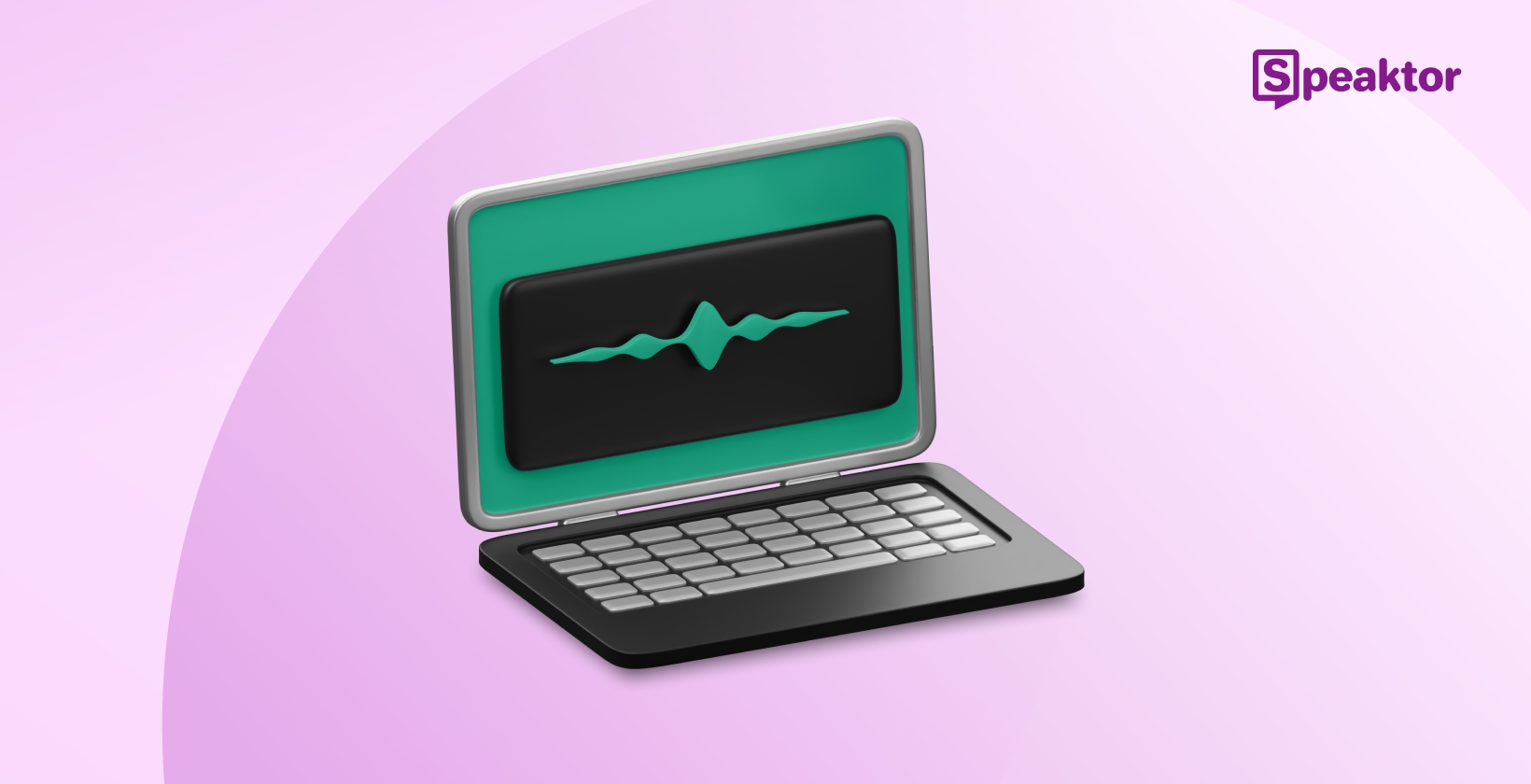Machines that speak like humans were once a science fiction fantasy. But, with advancements in speech synthesis technology, it has become a reality and we now have tools that can generate voices indistinguishable from human speech.
As AI-driven voice synthesis continues to evolve, its impact is becoming more widespread across industries, from entertainment to accessibility solutions. Experts at AstuteAnalytica predict that by the end of this decade, a significant portion of audio content—potentially over 50%—will be generated or heavily influenced by AI and the global market for AI audio will surpass US$ 14,070.7 million.
In this article, we’ll explore:
- What is voice synthesis software, and how it works
- The evolution of speech synthesis technology
- Benefits of using voice synthesis software
- Top applications of natural voice generators
- Top 5 voice synthesis software in 2025, and more.
What is Voice Synthesis Software
Voice synthesis software is a tool that helps you generate human-like speech from text using technologies like artificial intelligence (AI), deep learning, natural language processing (NLP), and machine learning. It enables digital devices to "speak" in a natural, expressive, and highly realistic manner that mimics human speech patterns, intonations, and emotions.
How Does a Voice Synthesis Software Work?
Voice synthesis AI relies on neural networks, deep learning, and natural language processing (NLP) to generate high-quality speech. The process typically involves the following key steps:
Step 1: Text Processing
First, the input text is analyzed and broken down into smaller components such as phonemes (basic units of sound) and syllables. For example, "$50" becomes "fifty dollars." This process is called text normalization.
Next, linguistic analysis breaks the text into phonemes (the smallest units of sound) and determines the necessary stress, pitch, and pauses to make the speech sound natural.
Step 2: Phonetic & Prosodic Modeling
To ensure the generated speech sounds fluid and expressive, AI models analyze the text’s structure. It then determines intonation, rhythm, and emphasis in the input. This step helps the software to create voices that mimic human-like speech patterns rather than monotonous or robotic.
Step 3: Neural Network-Based Speech Synthesis
Modern AI-powered systems like WaveNet, Tacotron, and FastSpeech generate speech waveforms that closely resemble human speech. These deep learning models have been trained on vast datasets of human speech, allowing them to replicate realistic tone, pitch, and even emotional expressions.
Step 4: Speech Output & Refinement
Once the AI has generated a speech waveform, it is converted into an audio file that you can play through any digital system. Some models allow real-time adjustments for fine-tuning speech speed, clarity, and emotional tone.
Evolution of Speech Synthesis Technology
Voice synthesis technology first emerged in the 1950s. It used formant synthesis to mimic human vocal cords. The voices were stiff, unnatural, and unmistakably robotic. You’d hear a monotone, stuttering speech that hardly has any rhythm. It worked, but just barely.
Then came concatenative synthesis in the late ‘90s and early 2000s. Instead of generating speech from scratch, developers started stitching together pre-recorded voice fragments. This way, voices had more clarity and fluidity, but the flexibility was still minimal. Every word and every phrase had to be manually recorded and stored in a massive database. If you needed a new sentence—you had to record it separately.
Today, we’re on the brink of something even bigger. AI voices are getting real-time, personalized, and emotionally aware. Soon, they’ll adapt seamlessly to conversations, changing tone based on context.
Benefits of Using Modern Voice Synthesis Software
AI-powered voice synthesis software offers a range of advantages for businesses, content creators, and individuals, such as:
Cost-Effectiveness and Scalability
Traditional voice recording requires professional voice actors, studio time, and extensive post-production, making it an expensive and time-consuming process. AI-driven voice synthesis eliminates these costs by providing on-demand voice generation at a fraction of this price and time.
With an AI voice generator, you scale effortlessly. Whether it's generating thousands of hours of voice content for audiobooks, e-learning, or customer support, speech generation tools can handle it instantly without fatigue, delays, or extra costs.
Consistency and Quality Control
Human recordings can vary in tone, pronunciation, and clarity across sessions, creating inconsistencies. AI-generated voices ensure uniformity, making them ideal for large-scale projects like customer service automation or brand voiceovers.
Multilingual Capabilities
AI voice synthesis makes multilingual content creation accessible. Instead of hiring multiple voice actors for different languages, AI can instantly generate voiceovers in dozens of languages and accents with native-like fluency.
Applications of Voice Synthesis Technology
Voice synthesis software is enabling many businesses and creators to enhance accessibility, efficiency, and user engagement. Below are some key applications where this technology is making an impact:
1. Audiobooks and Podcasts
Publishers and content creators are using natural voice generators to convert books, blogs, and articles into audio formats. This enables them to reach a broader audience, including those with visual impairments, to consume content effortlessly.
For instance, Amazon has introduced AI-powered voice synthesis for their Kindle to provide high-quality, lifelike audiobook narrations.
2. Virtual Assistants and Chatbots
Voice-enabled AI assistants like Siri, Alexa, and Google Assistant rely on speech synthesis technology to provide realistic responses to user queries. These assistants use realistic voice synthesis to enhance human-computer interactions.
According to Statista, the global number of voice assistants has reached 8.4 billion units by 2024, surpassing the world’s population.
3. E-Learning and Educational Content
A survey by eLearning Industry found that 67% of students prefer voice-enabled digital learning materials over traditional text-based resources.
Text-to-speech converters help educators and students meet this demand by converting text-based study materials into engaging audio lessons. This also makes learning more accessible and interactive.
4. Voice Cloning for Content Creation
AI-driven synthetic voice creation allows for personalizing digital content at scale. For example, video game developers can use voice cloning software to create dynamic character dialogues with the same sound as their favorite star without hiring a vocal artist.
However, obtaining proper permission to use their voice is important to ensure ethical use and protect privacy rights.
Top Voice Synthesis Software in 2025
There are many voice synthesis software available in the market today and finding the one that fits your needs and budget is not easy.
Here are the top 5 voice synthesis tools in 2025 you can use for different use cases:
Voice Synthesis Software | Key Features | Languages Supported | Pricing Model | Best For |
|---|---|---|---|---|
Speaktor | Natural human-like speech, Supports 50+ languages, offers 50+ voice profiles, allows PDFs, Word documents, web pages, and other text-based formats, platform agnostic | 50+ | Subscription based | Content creators, Audiobooks, e-Learning, Voiceover artists, Accessibility |
Amazon Polly | 60+ voices, real-time streaming, neural TTS | 30+ | Pay as you go | Developers, businesses |
Google Cloud TTS | 220+ voices, DeepMind WaveNet, SSML support | 40+ | Usage-based | AI-driven applications, branding |
Microsoft Azure Speech | Neural TTS, speech translation, enterprise security | 45+ | Enterprise tiered pricing | Large enterprises, security-focused businesses |
IBM Watson TTS | AI-driven customization, cloud-based, customer service integration | 25+ | Custom pricing | Customer service automation, AI developers |
1. Speaktor
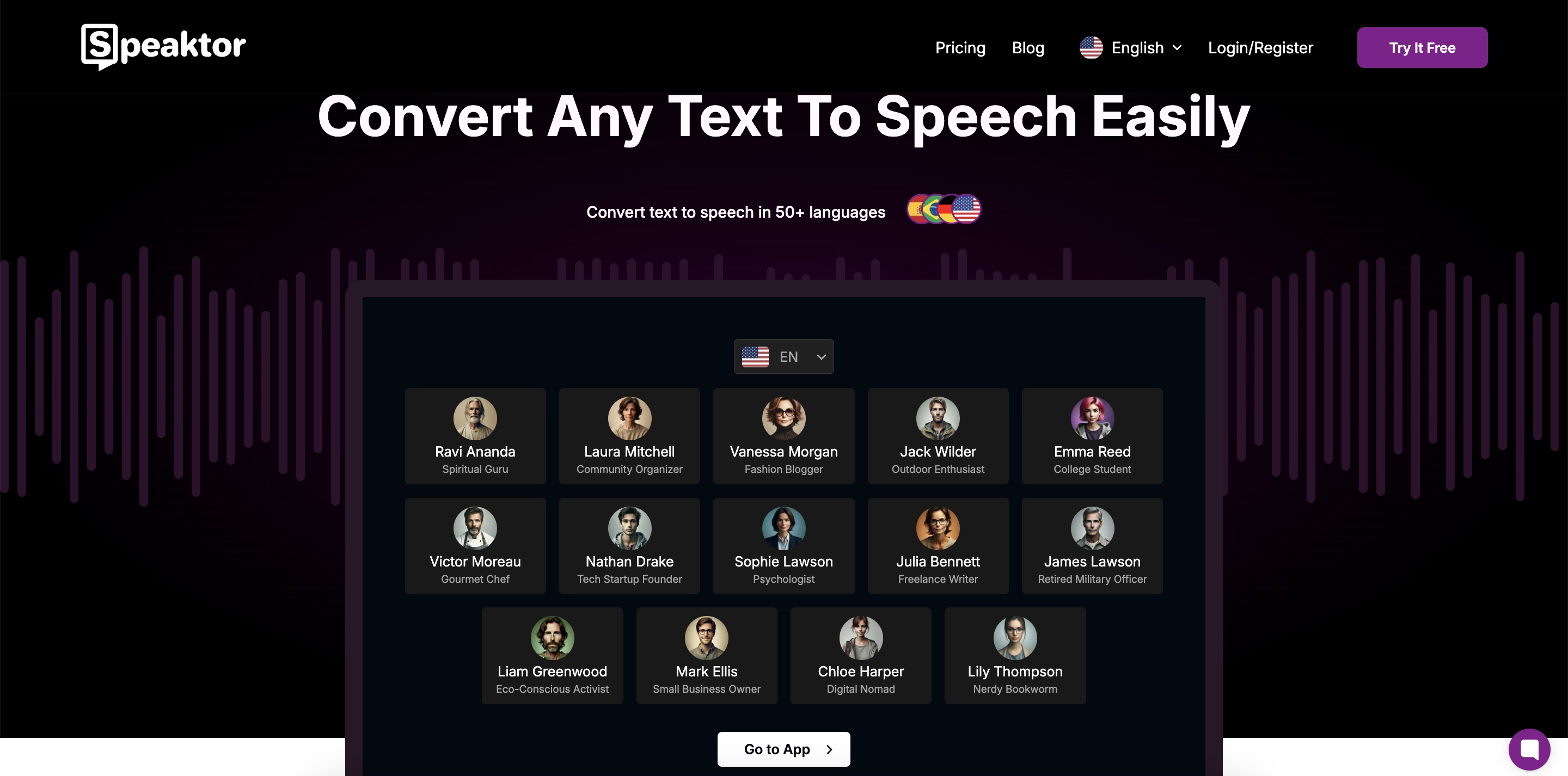
Speaktor is an AI-powered text-to-speech (TTS) software designed to transform written content into natural-sounding voiceovers. It supports multiple languages, integrates with various platforms, and provides accessible, high-quality speech synthesis for different use cases.
Speaktor is ideal for content creators, educators, businesses, accessibility solutions, media localization, and anyone looking for high-quality, scalable AI-generated voiceovers.
Top Features:
- Produces lifelike voices that mimic human speech patterns, tone, and inflection.
- Supports 50+ languages and 100+ voice profiles, making it ideal for global businesses, content creators, and accessibility solutions.
- Offers regional accents to enhance localization. For example, users can choose between Castilian or Latin American Spanish, British or American English, etc.
- Allows you to adjust the playback speed (0.5x to 2x).
- Offers various voice styles, tones, and genders to suit different content types.
- Supports PDFs, Word documents, web pages, and other text-based formats.
- Works across multiple platforms, including Windows, iOS, Android, and web browsers.
- It can be embedded into websites to enhance accessibility.
2. Amazon Polly
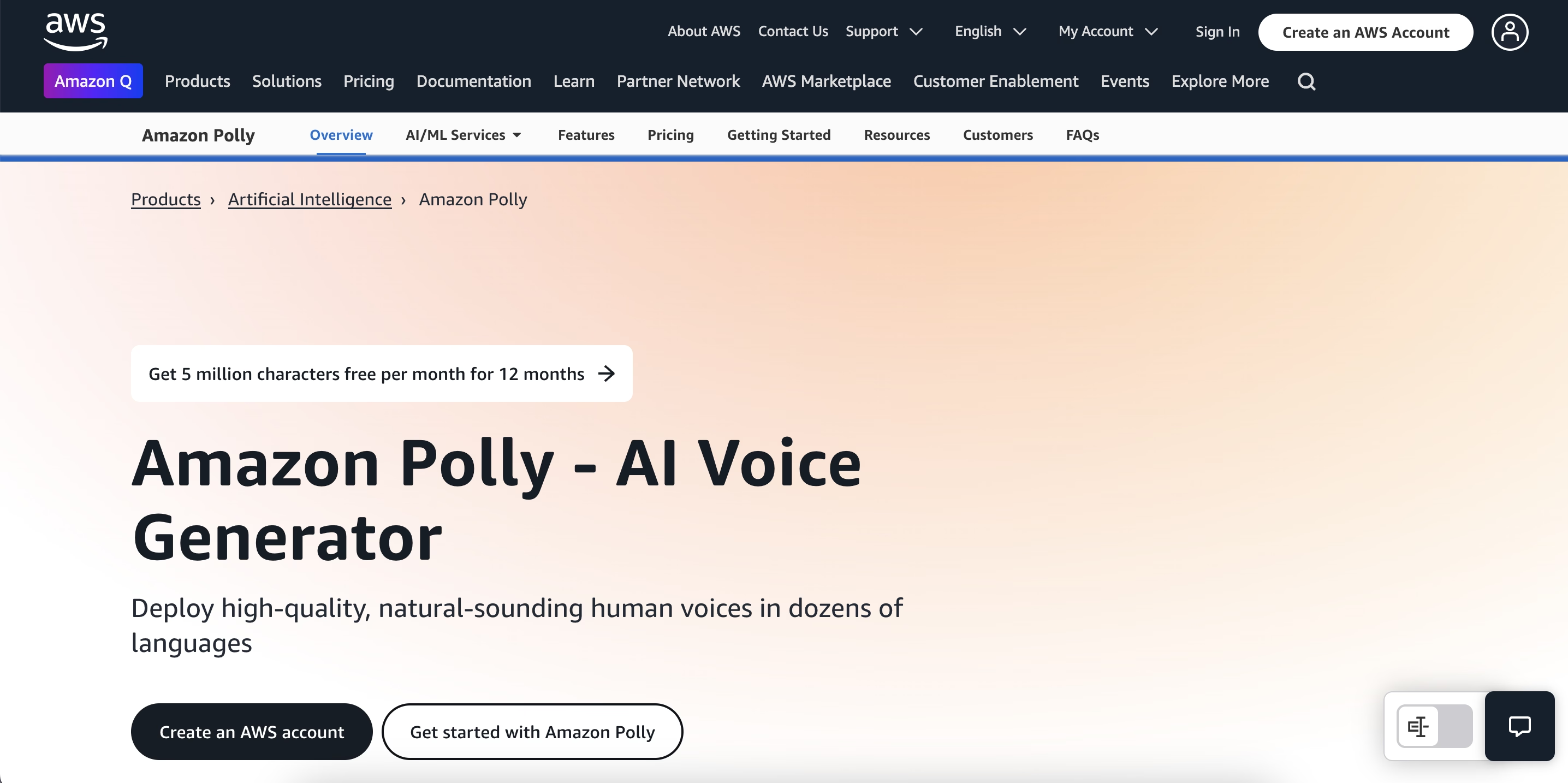
Amazon Polly is a cloud-based AI text-to-speech service that provides high-quality, lifelike speech generation using neural TTS technology. It’s widely used by developers and businesses for real-time streaming, automated voice applications, and customer service bots.
Top Features:
- Wide selection of over 60 voices.
- Supports multiple languages and dialects.
- Real-time streaming capabilities.
- Neural TTS for enhanced realism.
- Pay-as-you-go pricing model.
3. Google Cloud TTS
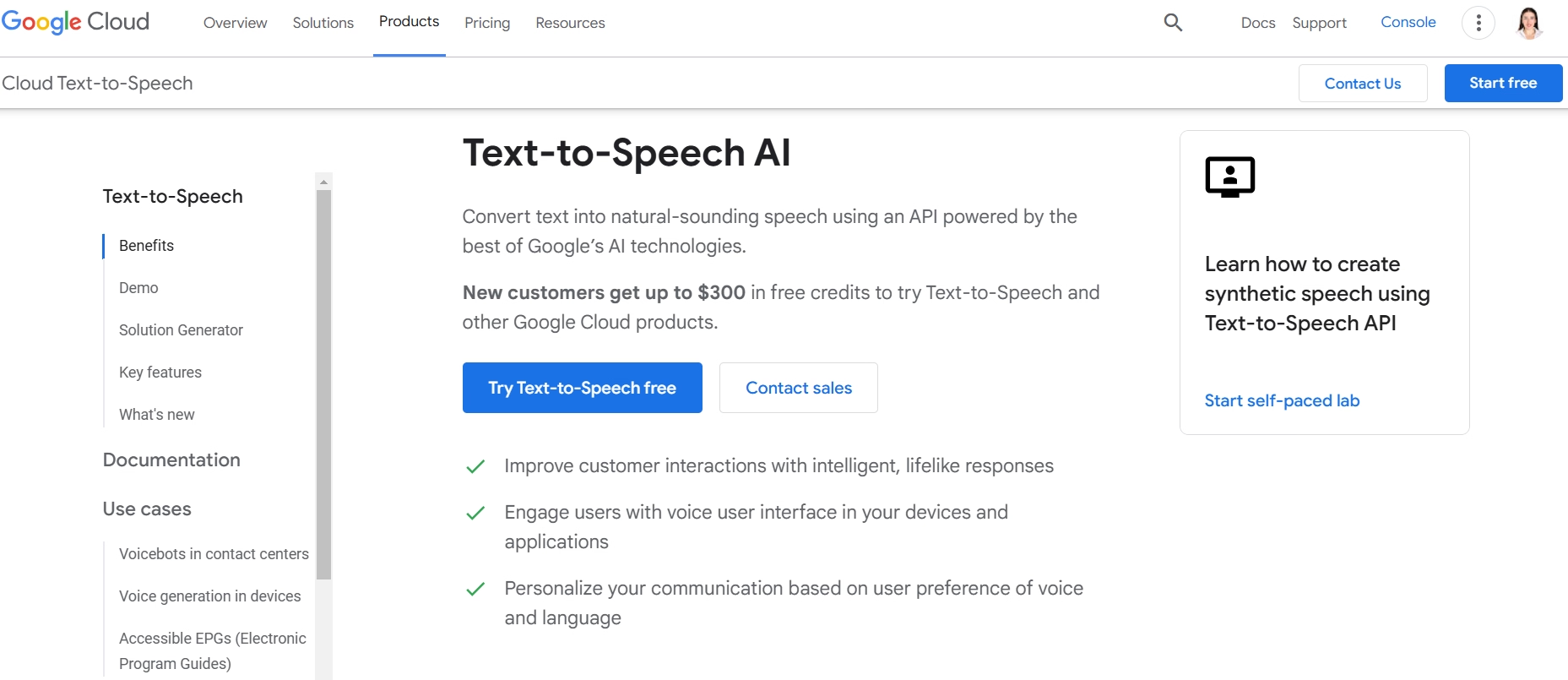
Google Cloud Text-to-Speech utilizes Google’s DeepMind WaveNet technology to deliver high-quality, customizable voice synthesis for various applications. It is an excellent choice for branding, multilingual applications, and AI-driven content creation.
Top Features:
- Supports over 220 voices across multiple languages.
- Custom voice tuning for branding consistency.
- High-fidelity WaveNet voice models.
- SSML (Speech Synthesis Markup Language) support for advanced control.
- API for seamless integration.
4. Microsoft Azure Speech

Microsoft Azure Speech provides enterprise-grade AI voice synthesis with robust security and scalability features. It is commonly used for large-scale business automation and voice-enabled applications.
Top Features:
- Neural TTS with realistic human-like speech
- Customizable voice generation for brand consistency
- Speech translation capabilities
- Enterprise-grade security and compliance
- Easy integration with Microsoft services
5. IBM Watson TTS
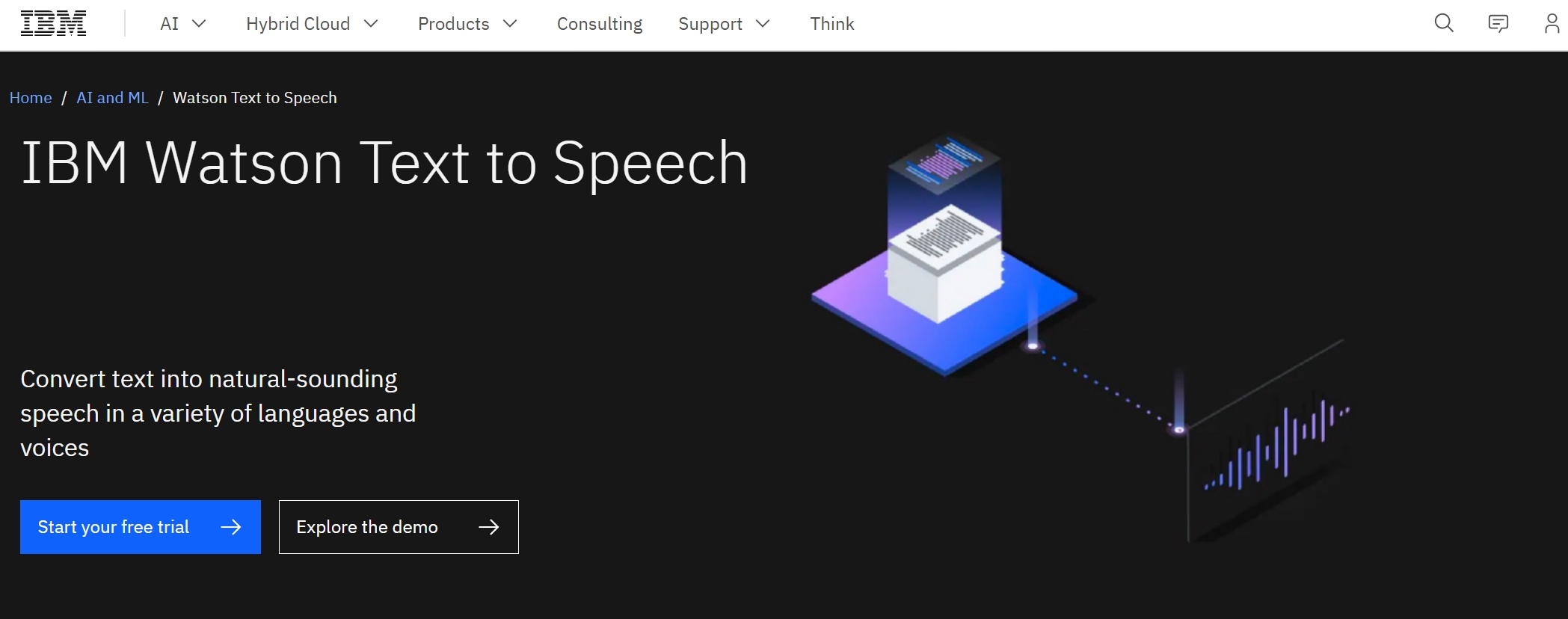
IBM Watson Text-to-Speech is an AI-driven speech synthesis platform that supports multiple languages and allows businesses to create custom voices for customer service automation, chatbots, and enterprise applications.
Top Features:
- Advanced AI-driven voice customization
- Multilingual support with a variety of voice styles
- Cloud-based deployment for easy access
- Integrates seamlessly with IBM Cloud AI services
- Ideal for customer service automation
Conclusion
AI voice synthesis is redefining how we create and consume audio content. Whether for audiobooks, podcasts, corporate training, or accessibility, AI-powered voices are making speech generation faster, smarter, and more dynamic.
If you are looking for natural-sounding voice generation for audiobooks, eLearning, or content creation, Speaktor fits best. To create AI audio for enterprise needs try Amazon Polly and IBM Watson TTS. And if you only need simple text-to-speech AI, Google TTS can work just fine.
As AI technology advances, voice synthesis will continue to evolve, providing even greater realism, personalization, and ethical considerations for the future of digital content.
